
How to Use ESP32 Lite V1.0.0 Development Board: Examples, Pinouts, and Specs
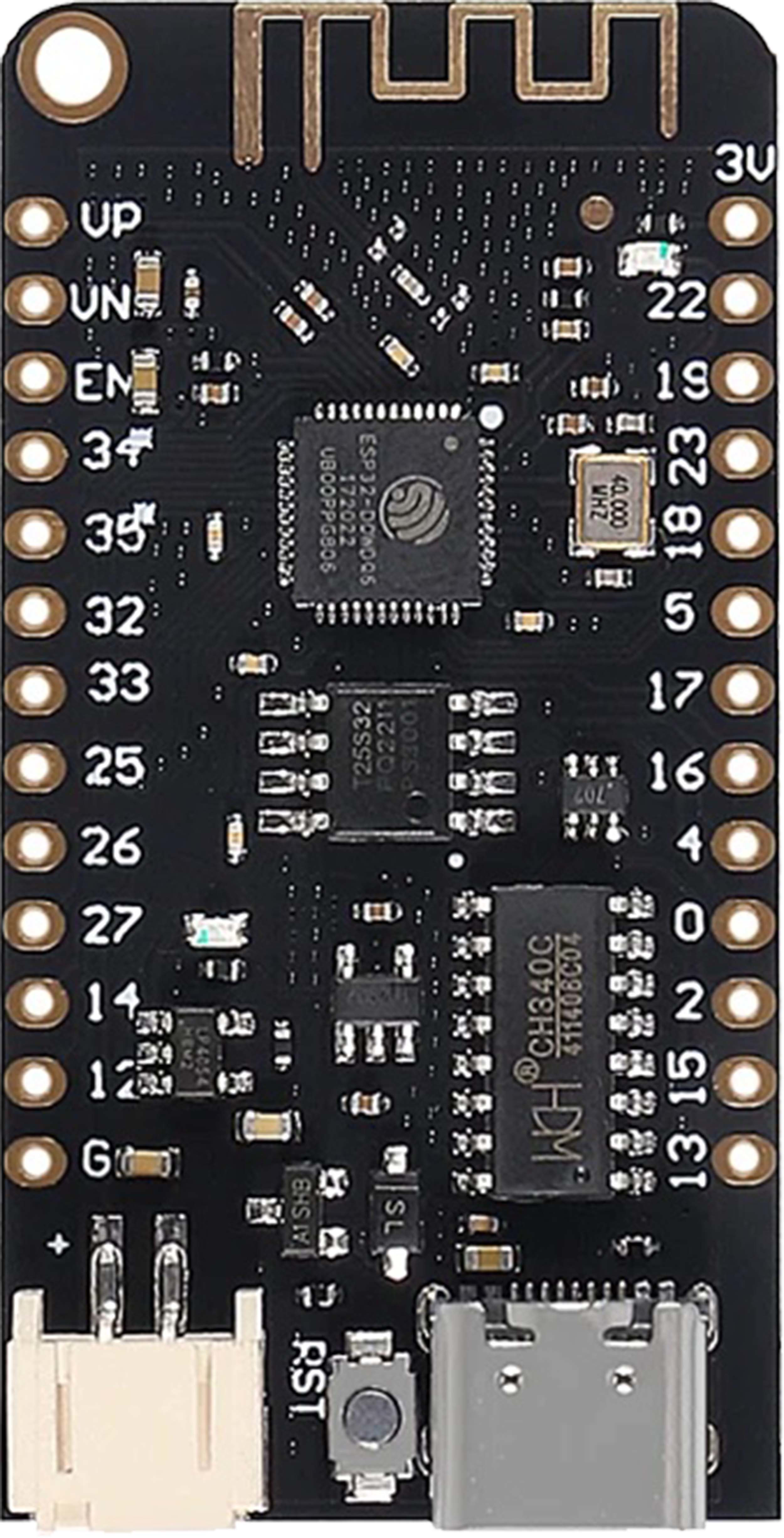
 Design with ESP32 Lite V1.0.0 Development Board in Cirkit Designer
Design with ESP32 Lite V1.0.0 Development Board in Cirkit DesignerIntroduction
The ESP32 Lite V1.0.0 Development Board is a compact and versatile development platform based on the ESP32 chip. It integrates Wi-Fi and Bluetooth capabilities, making it an excellent choice for Internet of Things (IoT) projects, smart devices, and rapid prototyping. Its small form factor and robust performance allow developers to create connected applications with ease.
Explore Projects Built with ESP32 Lite V1.0.0 Development Board
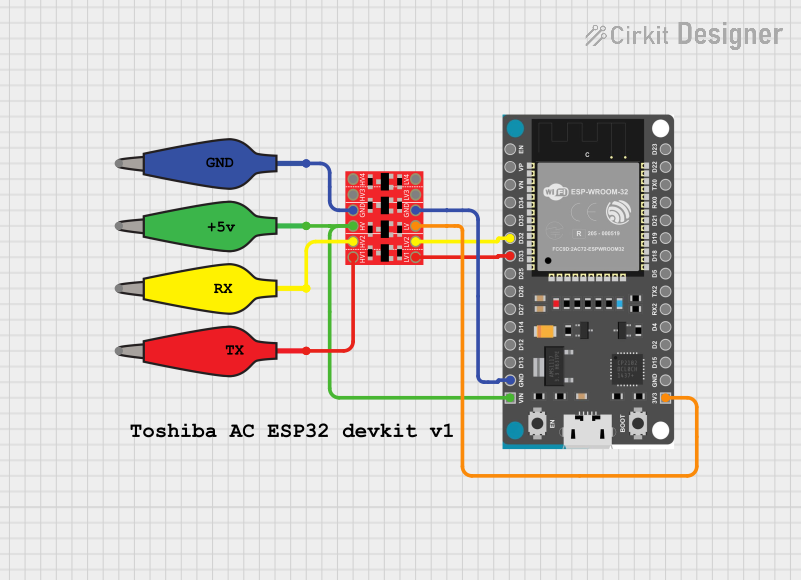
 Open Project in Cirkit Designer
Open Project in Cirkit Designer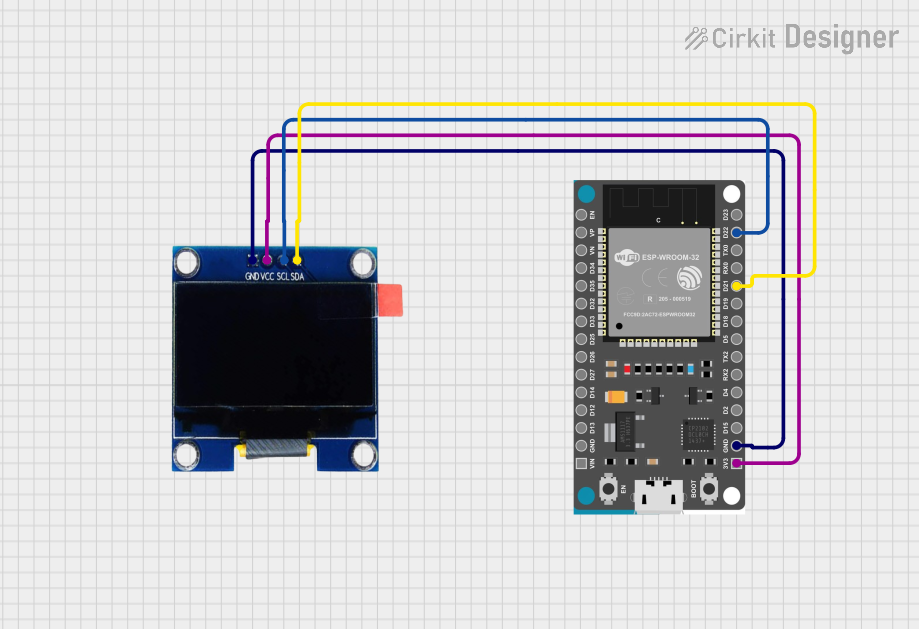
 Open Project in Cirkit Designer
Open Project in Cirkit Designer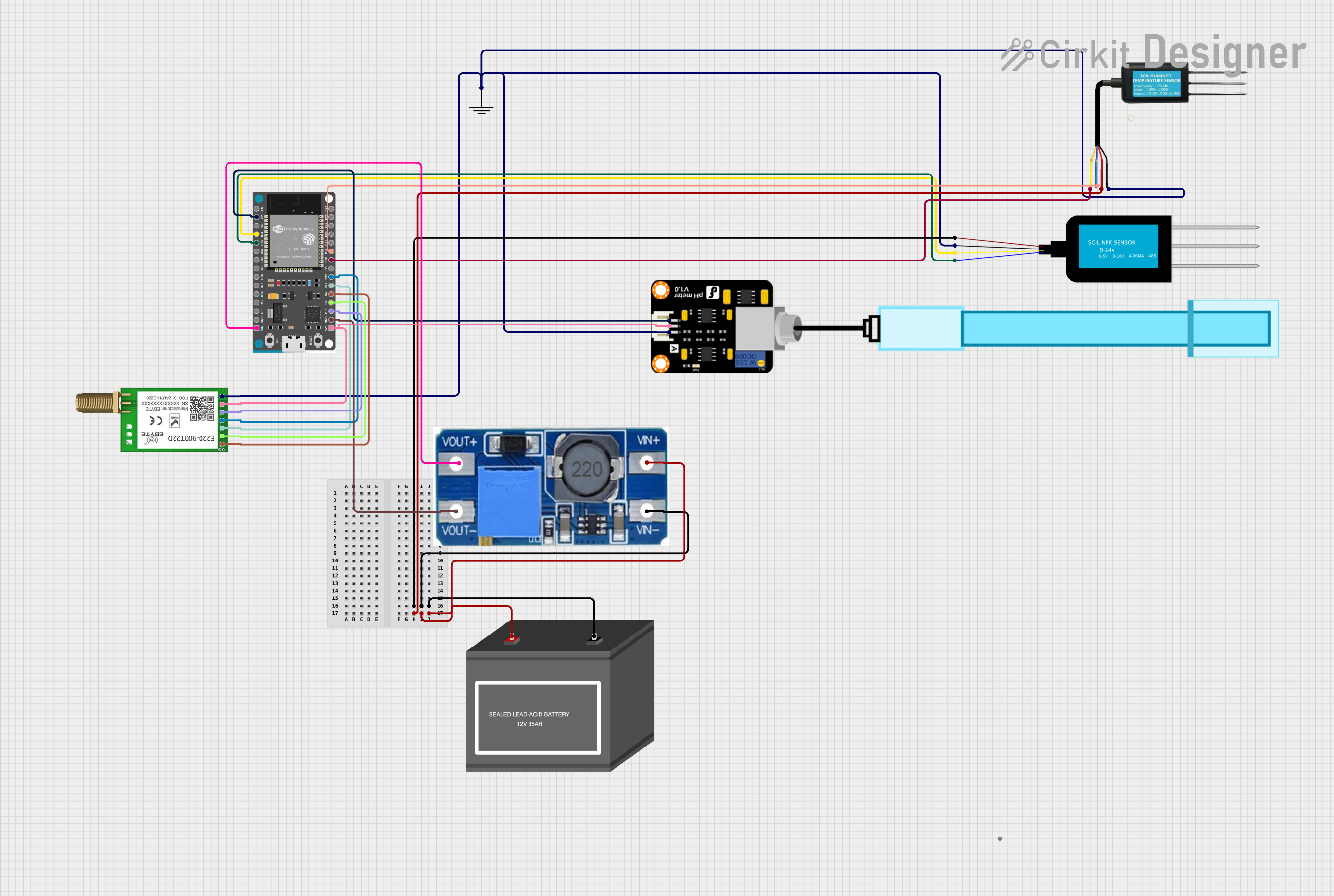
 Open Project in Cirkit Designer
Open Project in Cirkit Designer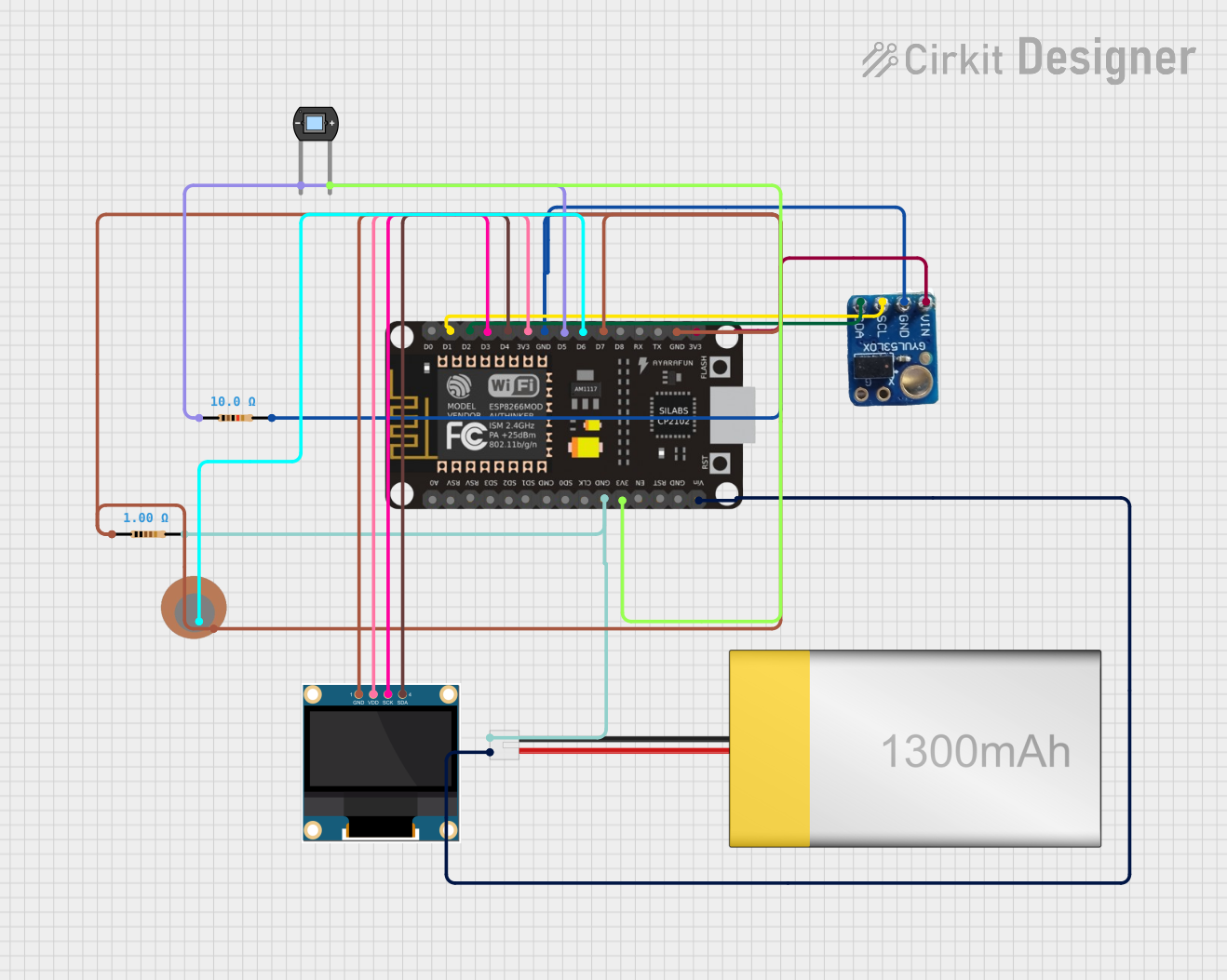
 Open Project in Cirkit Designer
Open Project in Cirkit DesignerExplore Projects Built with ESP32 Lite V1.0.0 Development Board

 Open Project in Cirkit Designer
Open Project in Cirkit Designer
 Open Project in Cirkit Designer
Open Project in Cirkit Designer
 Open Project in Cirkit Designer
Open Project in Cirkit Designer
 Open Project in Cirkit Designer
Open Project in Cirkit DesignerCommon Applications and Use Cases
- IoT devices and smart home automation
- Wireless sensor networks
- Wearable technology
- Prototyping for connected devices
- Bluetooth-enabled applications
- Low-power data logging and monitoring
Technical Specifications
The ESP32 Lite V1.0.0 Development Board is built around the ESP32 chip, which features dual-core processing, integrated Wi-Fi, and Bluetooth. Below are the key technical details:
Key Specifications
| Parameter | Value |
|---|---|
| Microcontroller | ESP32 (Xtensa® dual-core 32-bit LX6) |
| Clock Speed | Up to 240 MHz |
| Flash Memory | 4 MB |
| SRAM | 520 KB |
| Wi-Fi Standard | 802.11 b/g/n |
| Bluetooth Version | Bluetooth 4.2 (Classic + BLE) |
| Operating Voltage | 3.3V |
| Input Voltage (VIN) | 5V (via USB or external source) |
| GPIO Pins | 22 |
| ADC Channels | 18 |
| DAC Channels | 2 |
| Communication Interfaces | UART, SPI, I2C, I2S, PWM |
| Power Consumption | Ultra-low power (varies by mode) |
Pin Configuration and Descriptions
The ESP32 Lite V1.0.0 Development Board features a standard pinout for easy integration into projects. Below is the pin configuration:
| Pin Name | Function | Description |
|---|---|---|
| VIN | Power Input | Accepts 5V input from USB or external source. |
| 3V3 | Power Output | Provides 3.3V output for external components. |
| GND | Ground | Common ground for the circuit. |
| GPIO0 | General Purpose I/O | Configurable as input, output, or special use. |
| GPIO2 | General Purpose I/O | Configurable as input, output, or special use. |
| GPIO12 | ADC, General Purpose I/O | Supports analog input and digital I/O. |
| GPIO13 | ADC, General Purpose I/O | Supports analog input and digital I/O. |
| GPIO15 | PWM, General Purpose I/O | Supports PWM output and digital I/O. |
| TXD0 | UART Transmit | UART0 transmit pin for serial communication. |
| RXD0 | UART Receive | UART0 receive pin for serial communication. |
| EN | Enable | Resets the chip when pulled low. |
Note: Not all GPIO pins support all functions simultaneously. Refer to the ESP32 datasheet for detailed pin multiplexing information.
Usage Instructions
How to Use the ESP32 Lite V1.0.0 in a Circuit
Powering the Board:
- Connect the board to a computer or USB power source using a micro-USB cable.
- Alternatively, supply 5V to the VIN pin and connect GND to the ground of your power source.
Programming the Board:
- Install the Arduino IDE and add the ESP32 board support package.
- Select "ESP32 Dev Module" from the board manager.
- Connect the board to your computer and select the appropriate COM port.
Connecting Peripherals:
- Use the GPIO pins to connect sensors, actuators, or other peripherals.
- Ensure that the voltage levels of connected devices are compatible with the 3.3V logic of the ESP32.
Uploading Code:
- Write your code in the Arduino IDE or another supported environment.
- Click the upload button to flash the code to the ESP32 Lite V1.0.0.
Example Code: Blinking an LED
The following example demonstrates how to blink an LED connected to GPIO2:
// Define the GPIO pin where the LED is connected
const int ledPin = 2;
void setup() {
// Set the LED pin as an output
pinMode(ledPin, OUTPUT);
}
void loop() {
// Turn the LED on
digitalWrite(ledPin, HIGH);
delay(1000); // Wait for 1 second
// Turn the LED off
digitalWrite(ledPin, LOW);
delay(1000); // Wait for 1 second
}
Important Considerations and Best Practices
- Voltage Levels: Ensure that all connected devices operate at 3.3V logic levels. Use level shifters if necessary.
- Power Supply: Use a stable power source to avoid unexpected resets or performance issues.
- GPIO Usage: Avoid using GPIO0, GPIO2, and GPIO15 for critical functions, as they have special roles during boot.
- Heat Management: The ESP32 may heat up during operation. Ensure proper ventilation if used in enclosed spaces.
Troubleshooting and FAQs
Common Issues and Solutions
The board is not detected by the computer:
- Ensure the USB cable is functional and supports data transfer.
- Install the correct USB-to-serial driver for the ESP32.
Code upload fails:
- Check that the correct COM port and board type are selected in the Arduino IDE.
- Press and hold the "BOOT" button on the board while uploading the code.
Wi-Fi connection issues:
- Verify the SSID and password in your code.
- Ensure the router is within range and supports 2.4 GHz Wi-Fi.
Random resets or instability:
- Use a stable power source with sufficient current (at least 500 mA).
- Check for loose connections or short circuits in your circuit.
FAQs
Q: Can I use the ESP32 Lite V1.0.0 with MicroPython?
A: Yes, the ESP32 Lite V1.0.0 supports MicroPython. You can flash the MicroPython firmware and use it for development.
Q: What is the maximum range of the Wi-Fi module?
A: The Wi-Fi range depends on environmental factors but typically extends up to 100 meters in open spaces.
Q: Can I use the board for battery-powered applications?
A: Yes, the board supports battery operation. Use a 3.7V LiPo battery with a suitable regulator or connect to the VIN pin.
Q: How do I reset the board?
A: Press the "EN" button to reset the board. This will restart the microcontroller.
By following this documentation, you can effectively use the ESP32 Lite V1.0.0 Development Board for your projects and troubleshoot common issues with ease.